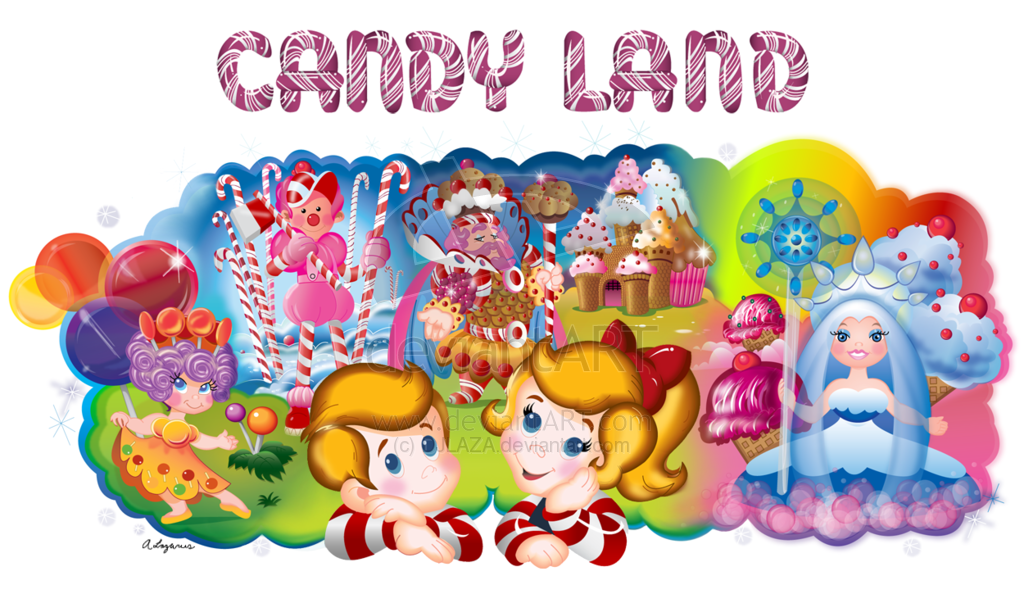While browsing last-minute gift ideas for nieces and nephews the other day, I stumbled upon an old classic–the game of Candy Land.
Instantly I was transported to images of my 5-year-old self crouched in front of a multi-colored board lined with peppermint edges and game pieces that were as life-like as my imagination could reproduce in the ’80’s.
My friends and I spent countless summer days cross-legged and sweating over that flimsy board. There was a thickness in the summer air and an even thicker competition, as we embarked upon a magical journey through “candy cane forests and a sea of swirly twirly gumdrops” in a race to the finish. It makes me wonder if Buddy the Elf took a short cut through Candy Land en route to NYC.
During those magical, sugary hours, I was learning at more than I realized. As I reminisced this week, the thought came to me that Candy Land provides the perfect metaphor for the path to change. So I set out to see if I remembered accurately.
This iconic game comes with an important history. It was first manufactured in 1949, after having been invented a few years earlier by a woman who had polio. She used the game in children’s polio wards to provide a welcomed diversion from their illnesses and from their traumatic and elongated separations from family. There’s a fascinating article that provides an in-depth analysis of the connection between polio and Candy Land’s auspicious beginnings, and how the whimsical fantasy of a world made of candy was a great way to soothe both the frenzied hysteria and the very real anxiety that surrounded the disease.
As an aside, this article entertains the idea that the polio epidemic overwhelmingly shifted the cultural parenting tide from free range parenting to anxiety-driven hovering, and it laments how that cultural change continues to impact modern parenting styles.
The history of the game continues with multiple overhauls (e.g. the 1990’s exclusion of Plumpy); and enduring celebrity remakes from Dora the Explorer to a SpongeBob version. To date there have been 40 million copies sold, making this iconic board game a household name.
So why has this particular game withstood the test of time? Maybe it’s just the brilliant marketing to kids with a kaleidoscope of colors, delicious characters, and an edible plot line. Or, maybe not.
I wonder if the original creator knew how accurately her game predicts the path to successful change. From changing our eating habits, to planning cross country moves, to switching jobs, the path to change looks remarkably similar across the board (pun intended).
Here’s a quick sketch of the game for those who are unfamiliar. I’ll mostly be referencing the version that originated in 1985.
There is a winding path that spans the board and is divided into color blocks and locations. All locations are candy-related: plum swamps, licorice lanes, gum drop stops, etc. The players take turns picking a card that has an image of a particular color block or candy location that maps along the board. The player who picked the card moves to that spot, and then each player continues picking cards until one of the players advances far enough to reach the end: home. However, there is a catch. If you pick a card that coincides with a location that is further back on the board, you are required to retrace your steps. There are also certain places where you can get stuck (in a variety of sticky situations) and lose your turn. But in a whimsical balance, there are candy-coated shortcuts to accelerate your journey as well. So you could jump ahead of and then fall behind other players from one turn to the next.
Without opening a discussion on free will versus “Playing the hand you’ve been dealt,” let’s take a look at some of the toothsome (and gritty) truths that the Candy Land journey shares with the change process:
1–It’s non-linear. It’s not a straight forward journey. It is a forward, backward, and then sideways journey…And then backward again, with a couple steps forward, until you get knocked sideways and end up dizzy, and don’t know which direction you’re headed in.
2–Sometimes there are shortcuts…sometimes there are not. More often than not, there are not.
3–Sometimes there are obstacles…and more obstacles. Perseverance is key.
4–Stuck isn’t really stuck. Even with the obstacles, there’s a way forward. There’s always a way forward.
5–Often times there are setbacks (which are different than obstacles). In the game, there’s a looming awareness that you could end up retracing your steps at any moment. Expecting those setbacks leads to a quicker recovery time.
6–There is an end…and that end is home. The original 1949 version had each player nostalgically arriving at home, and for good reason. At the time, children with polio had to endure traumatic separations from their parents for months at a time while being treated. The reminder of home as the end goal presented comfort and hope. For us, home may be literal or metaphorical, but it’s always the place where transformation has occurred and where comfort and contentment reside.
Now that I’ve hopefully convinced you of Candy Land’s predictive validity as a formula for success, let’s talk about the best part. For those of us who are obsessed with change, and its importance, and who spend our days pondering the minutiae of it all, this game takes us right back to the basics.
Us adults over-complicate the process. Candy Land is that sweet reminder of how simple the message is: stick to the path, persevere, keep the end in mind, and eventually you’ll get there.
Who better to glean wisdom from than children? As the great Madeleine L’Engle once said: “You have to write the book that wants to be written. And if the book will be too difficult for grown-ups, then you write it for children.”
That literary pearl certainly applies here. If adults don’t get the formula for change, if they over-complicate it with a long list of defenses, why not teach it to kids instead?
I remember the rise and fall of my 5-year-old ambitions with the twists and turns of that game. Maybe at that age I was better acquainted, more familiar with, the path to change than I realized. Maybe it’s that my 5-year-old self could stoop more easily to keep her ear fixed to the ground–to pay attention. Whatever the case, I have a sneaking suspicion I was closer to wisdom at 5 than I am now.
I’m thinking of marketing my own version of Candy Land with fill-in-the-blank obstacles to help us plot our individual journeys to change. It will be complete with winding candy paths, sticky barriers, sweet short cuts, and a road that leads to “home”.
Any takers?


I am struck by your distinction between between obstacles and setbacks. What do you mean exactly? Thanks.